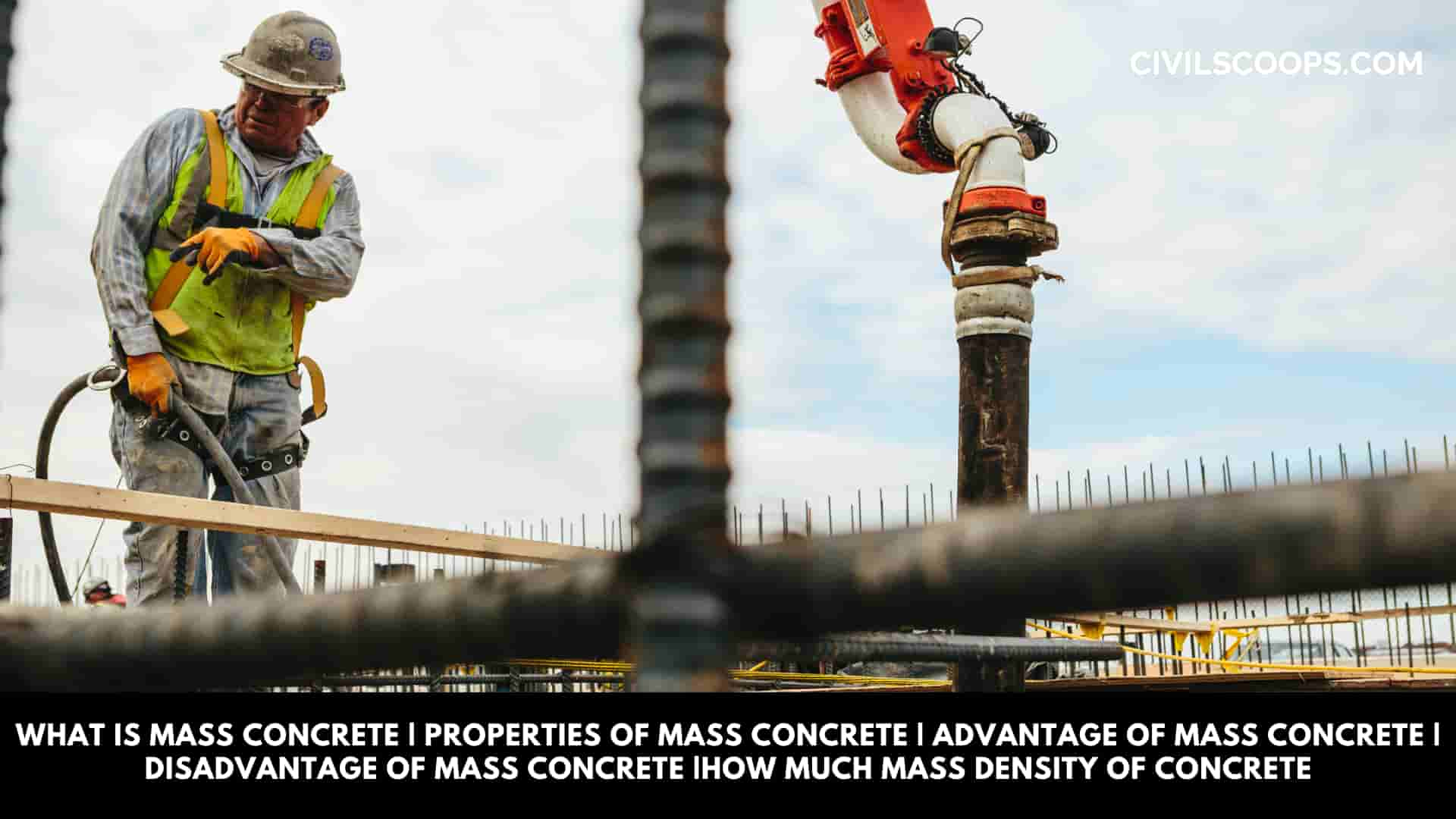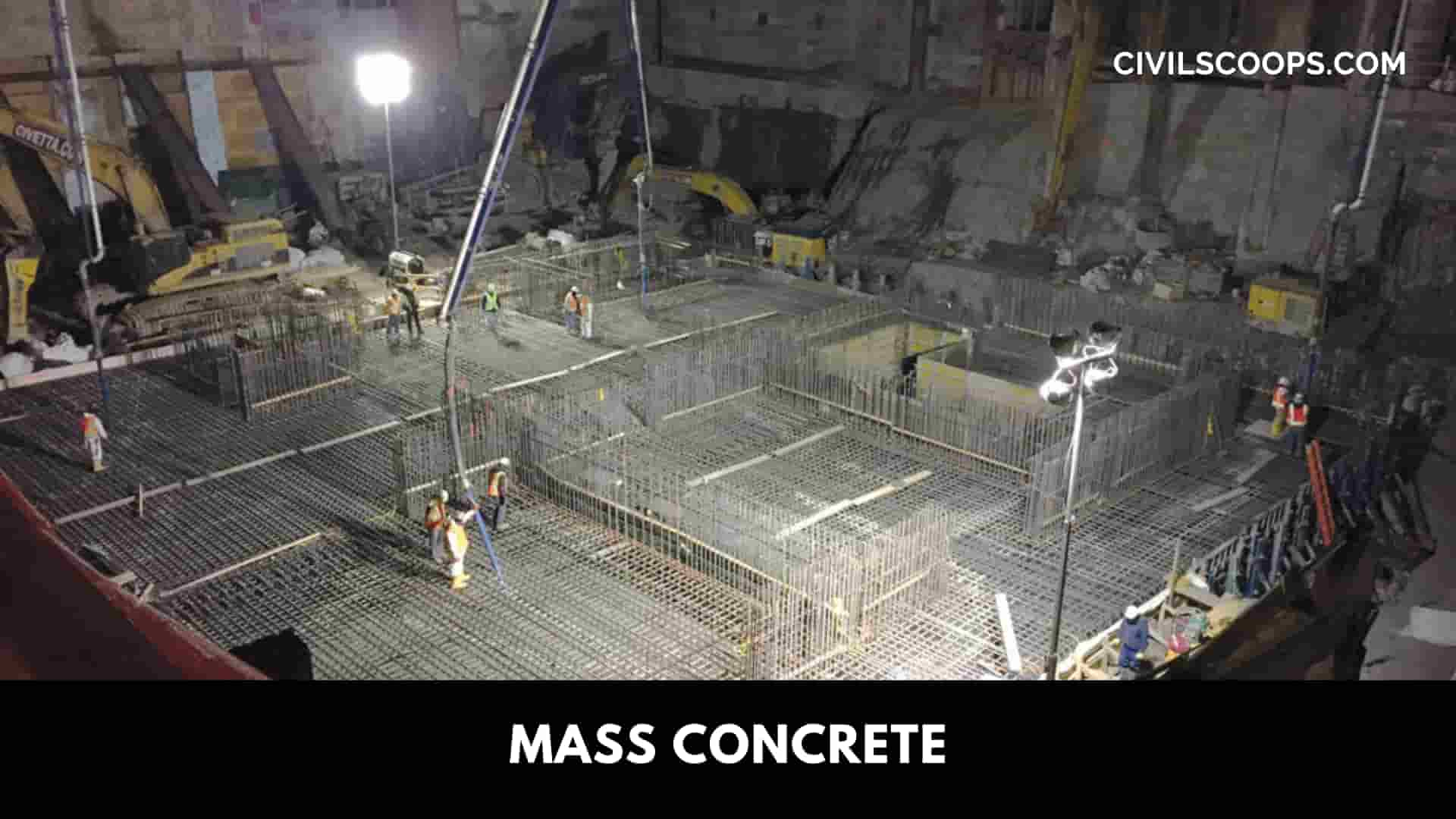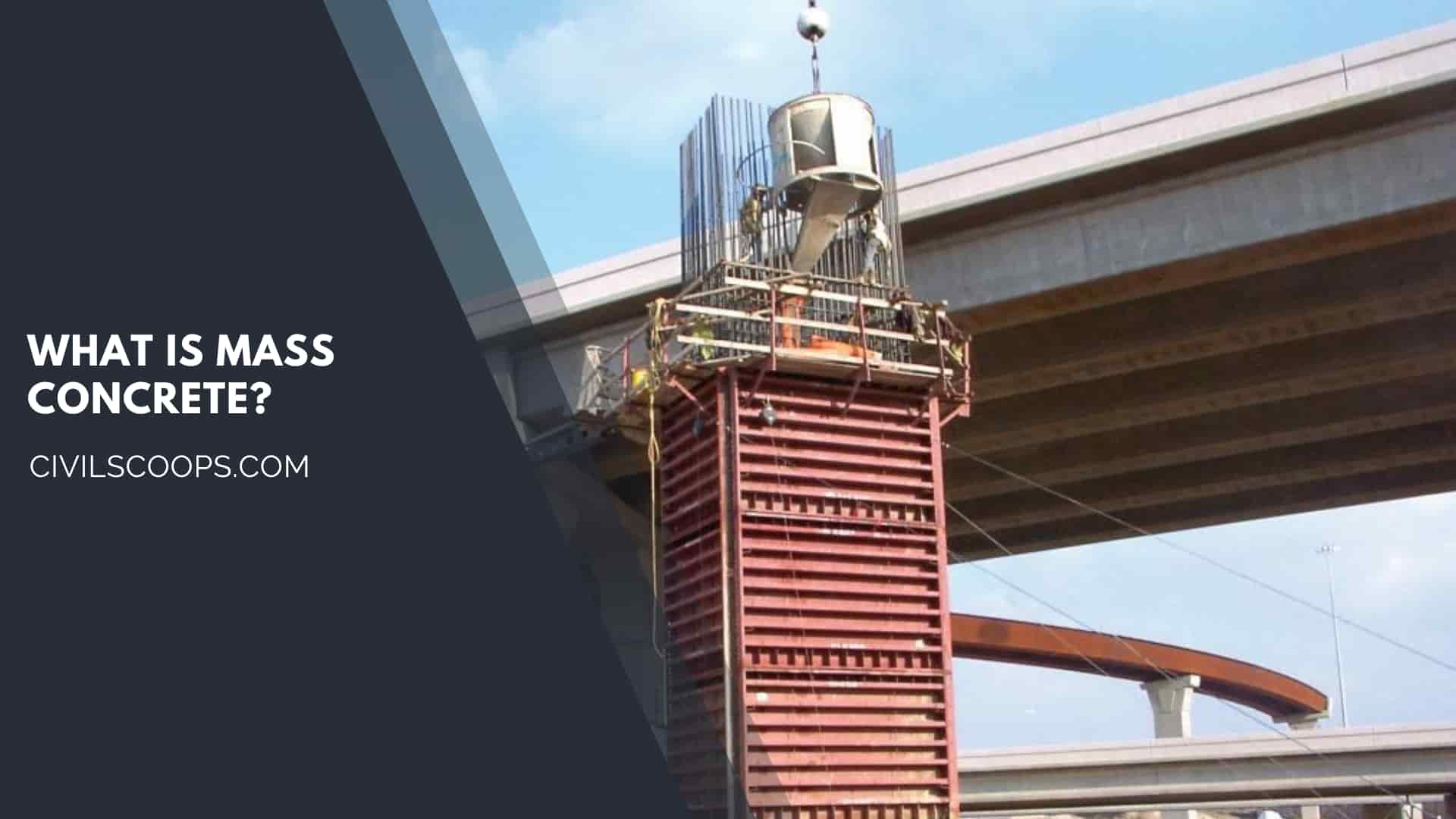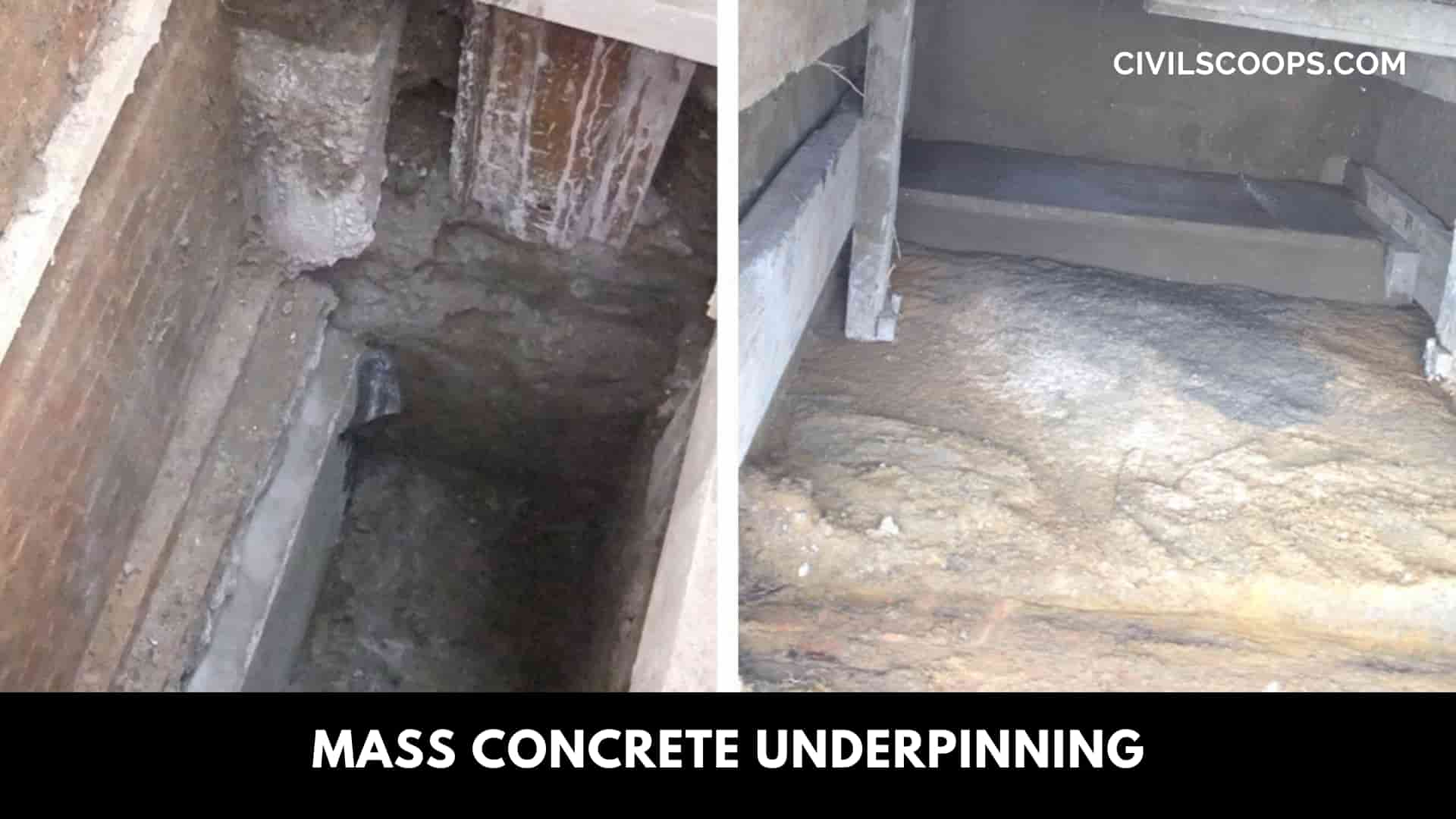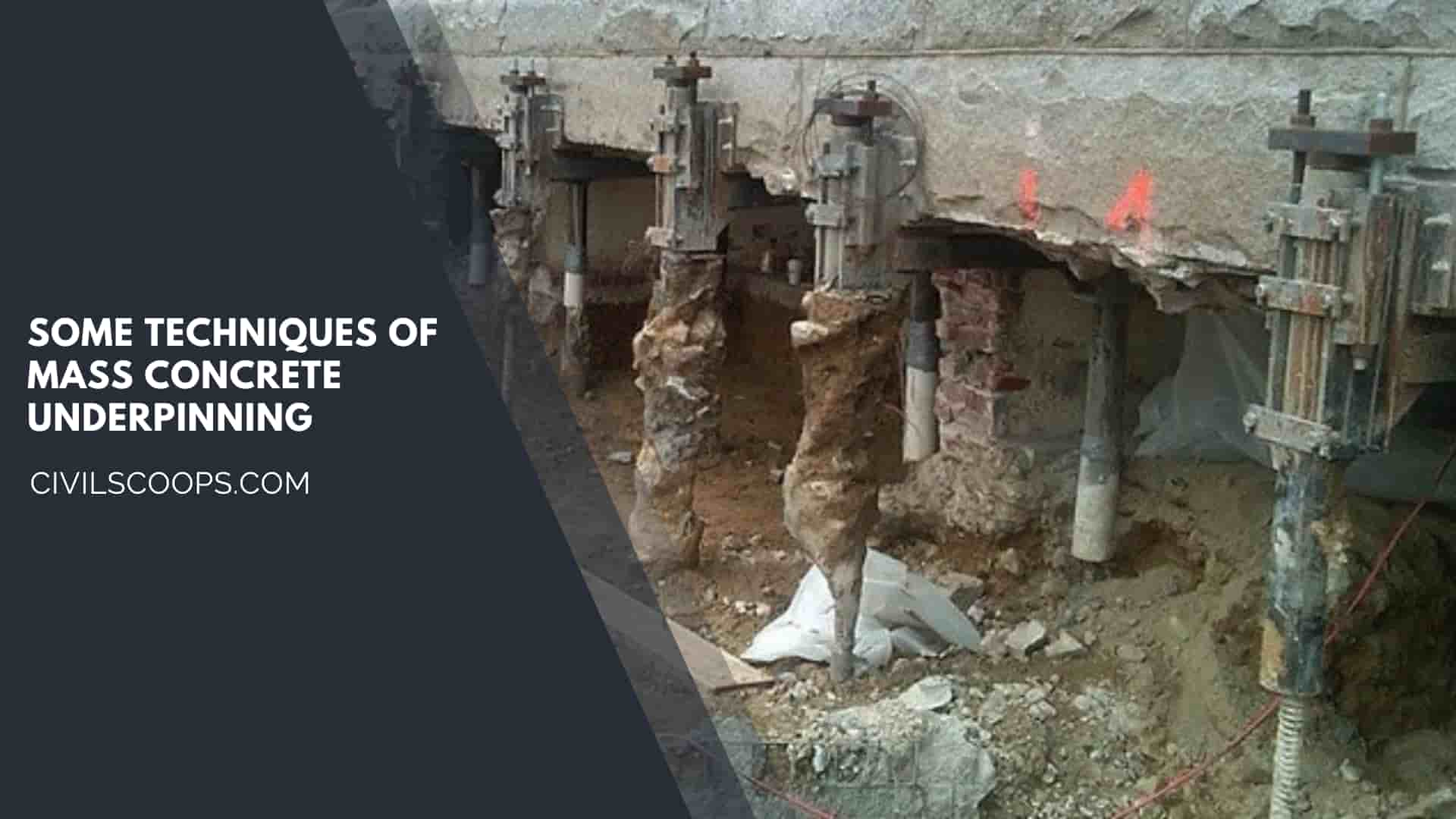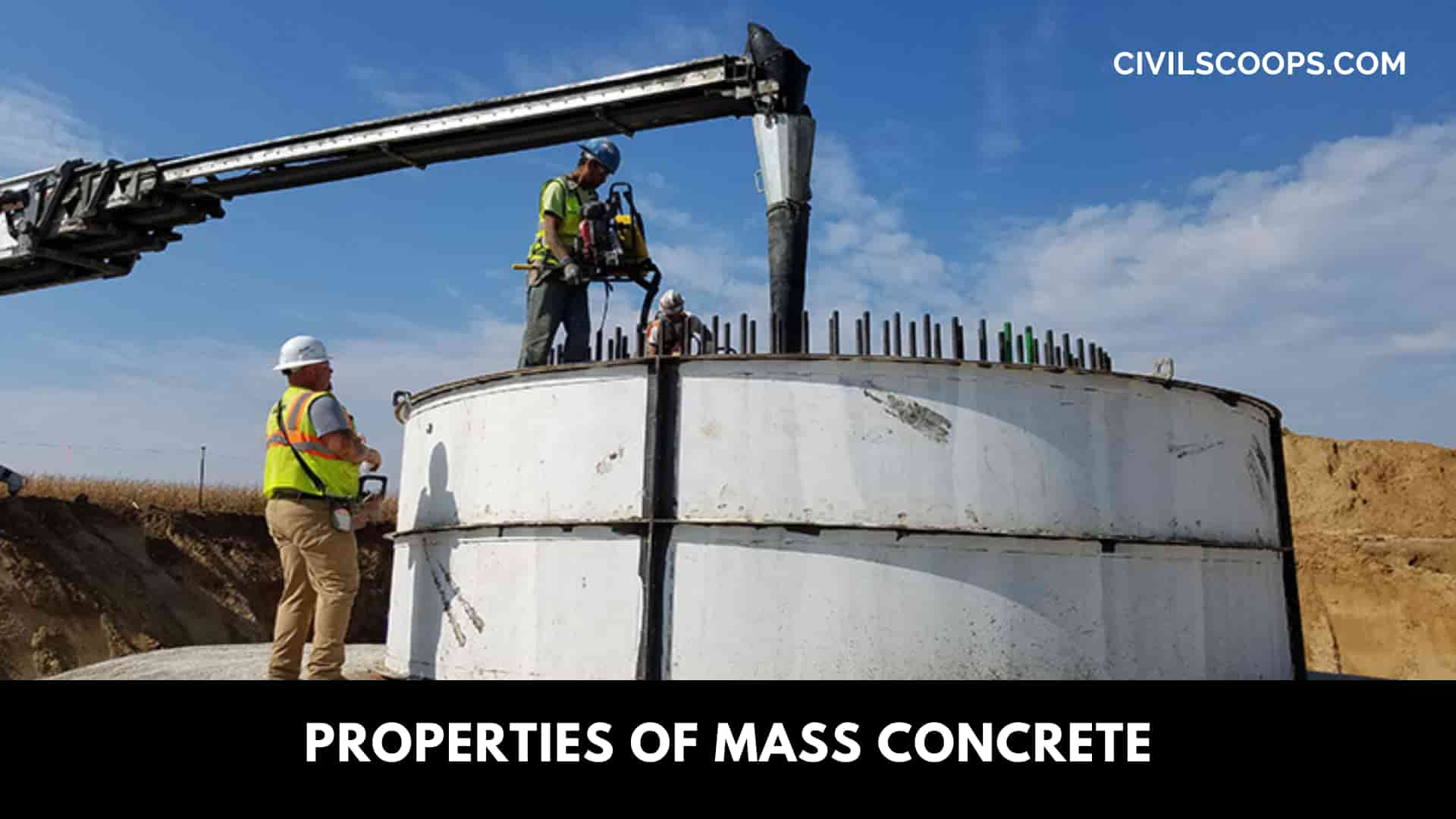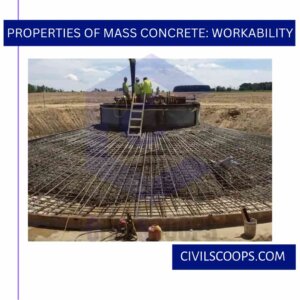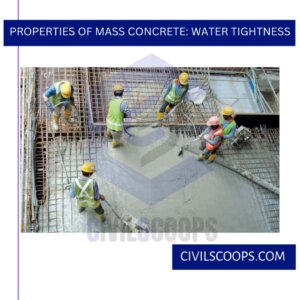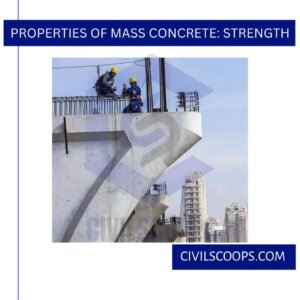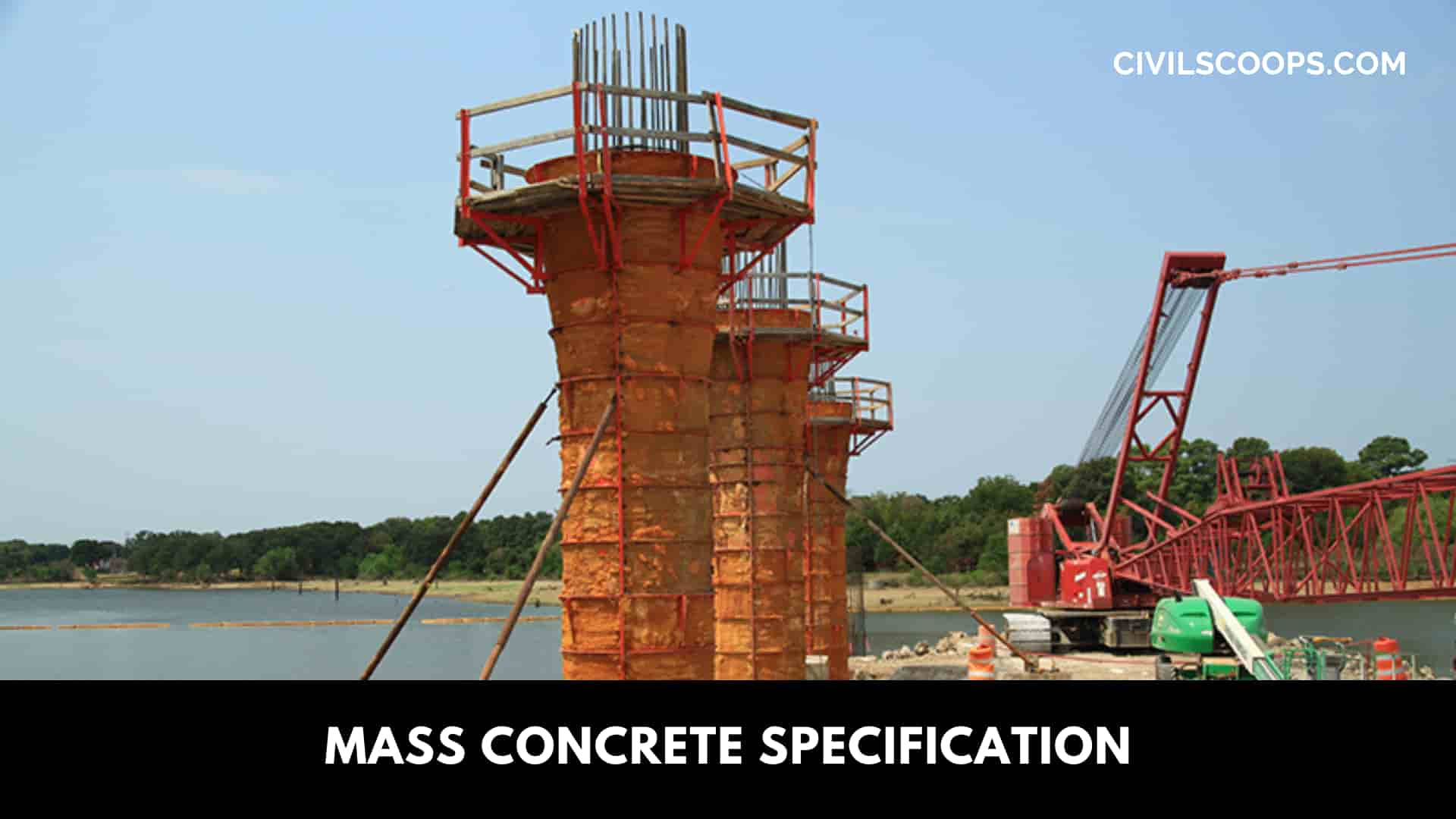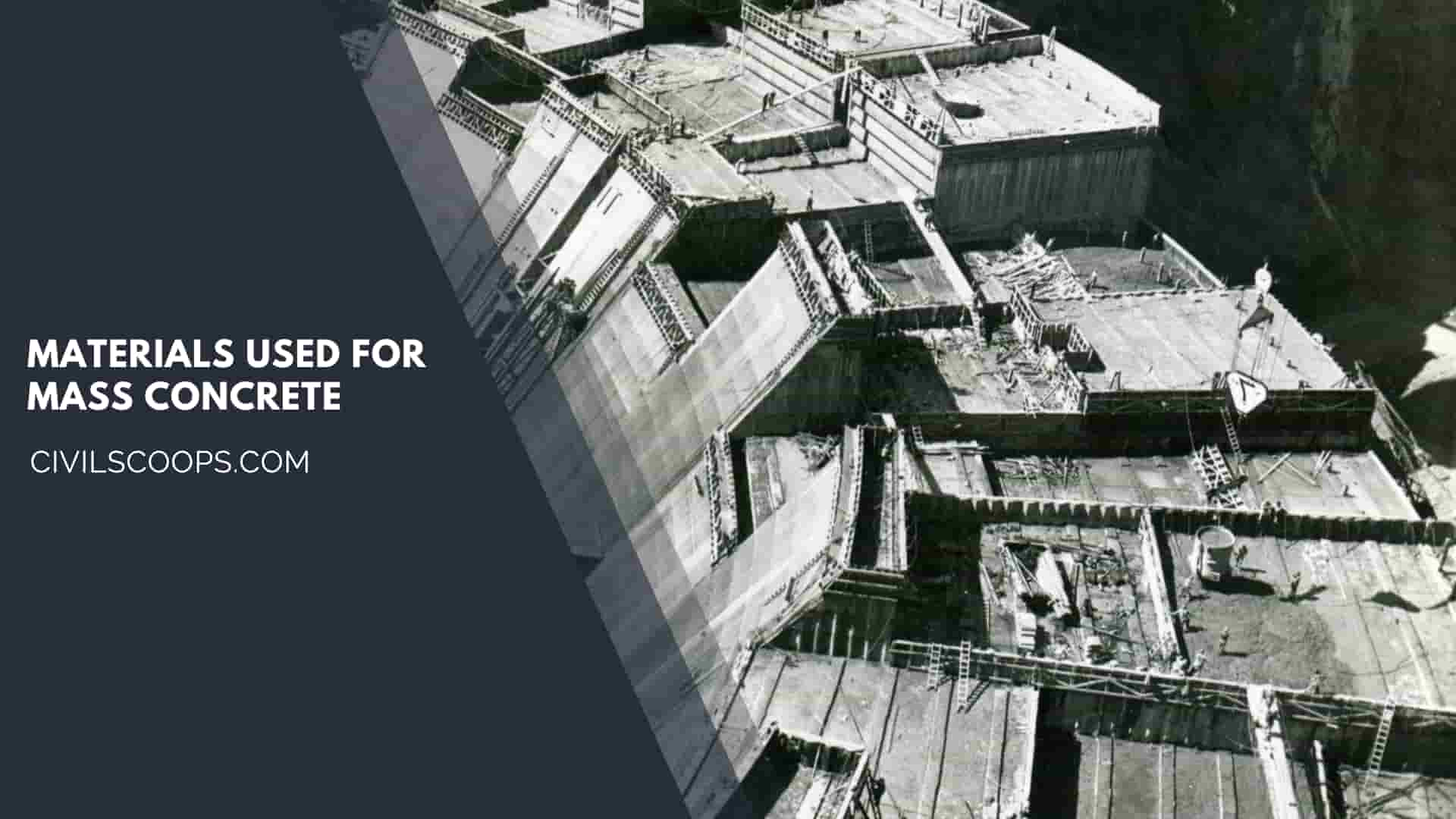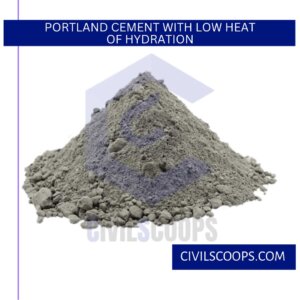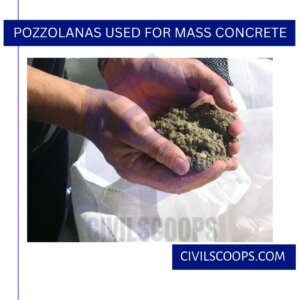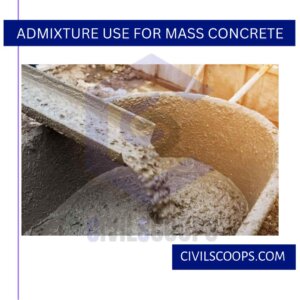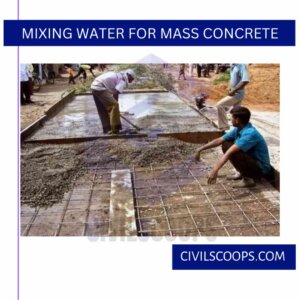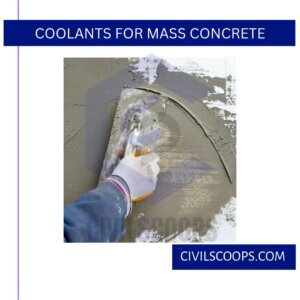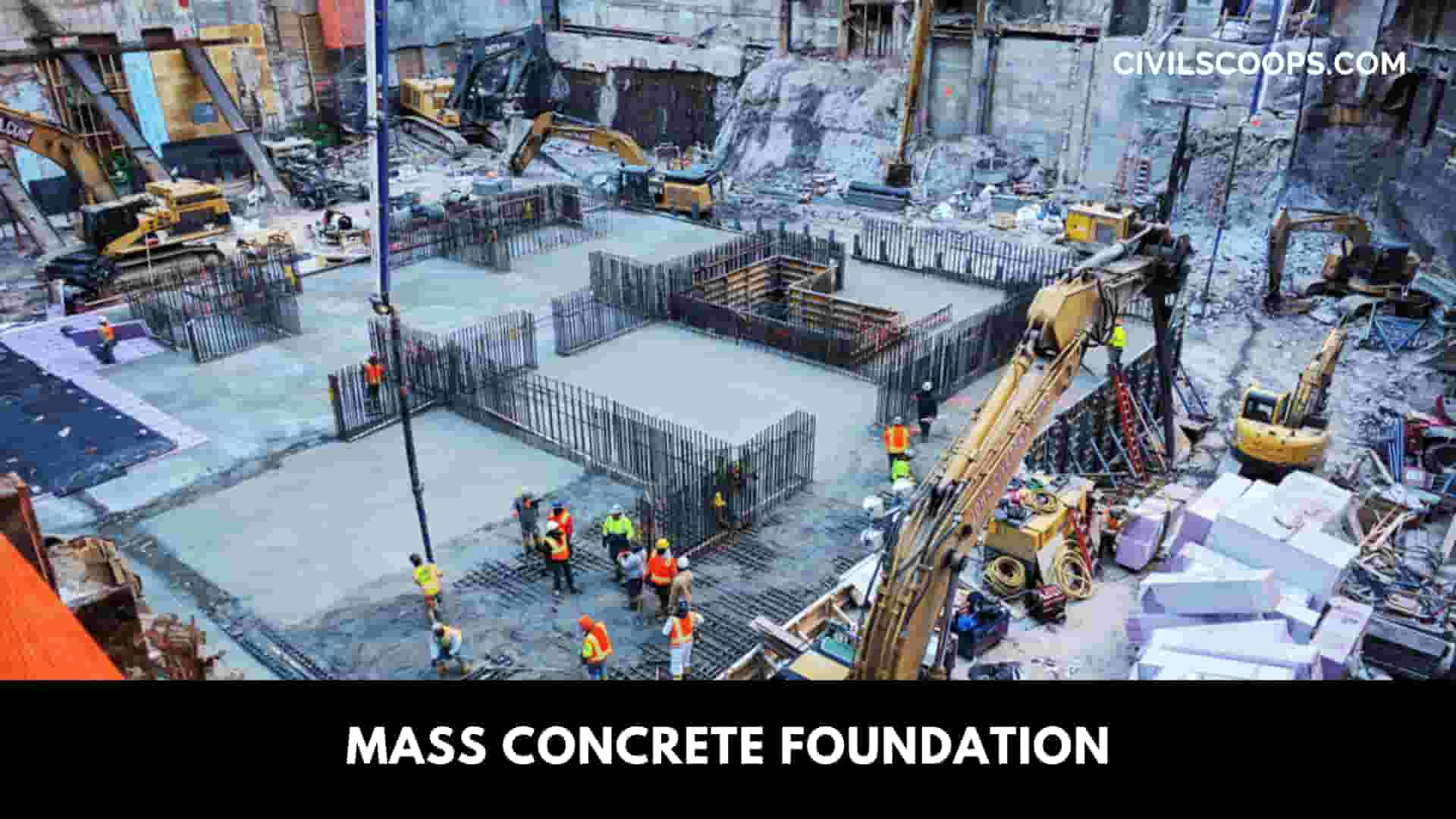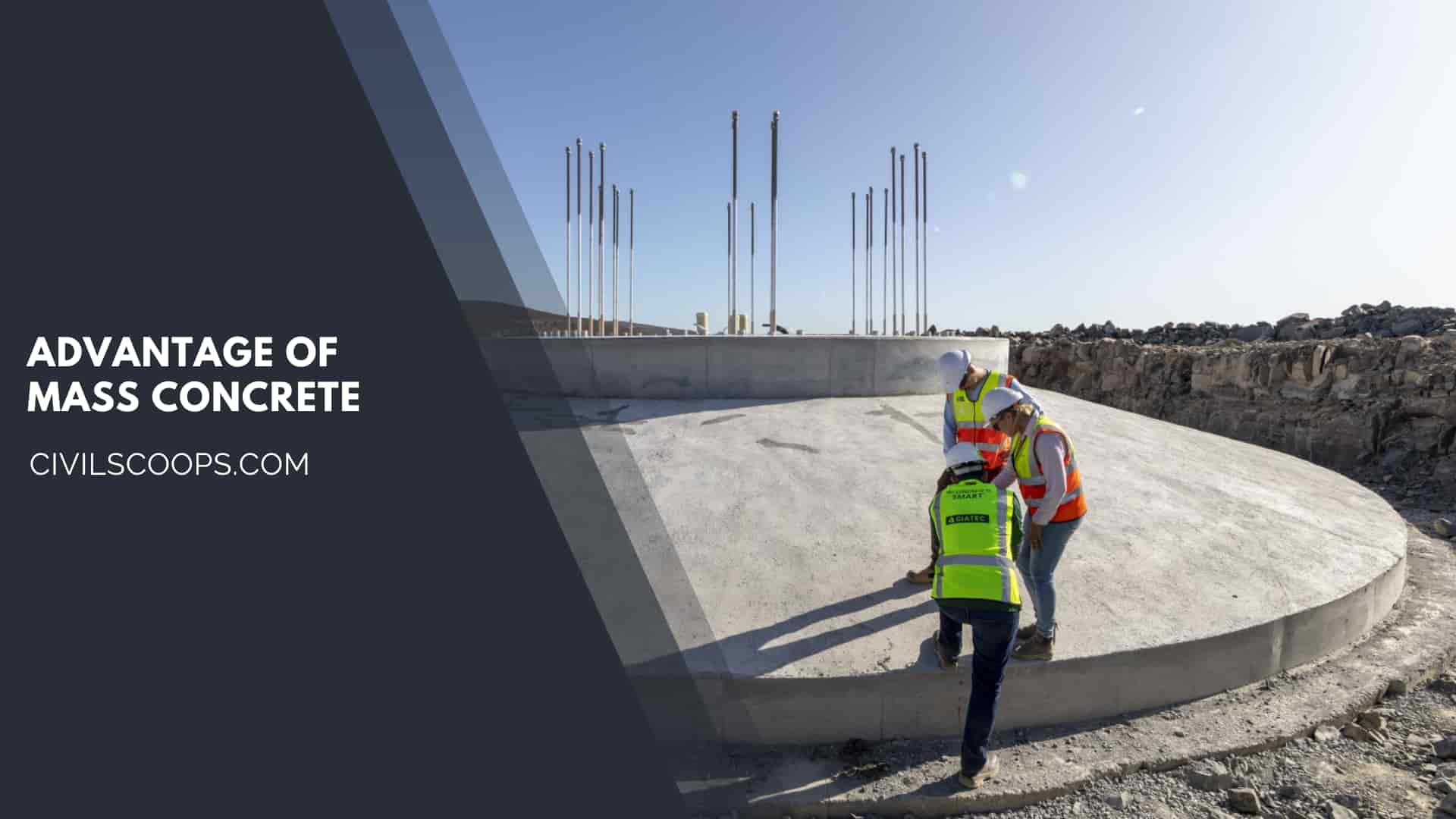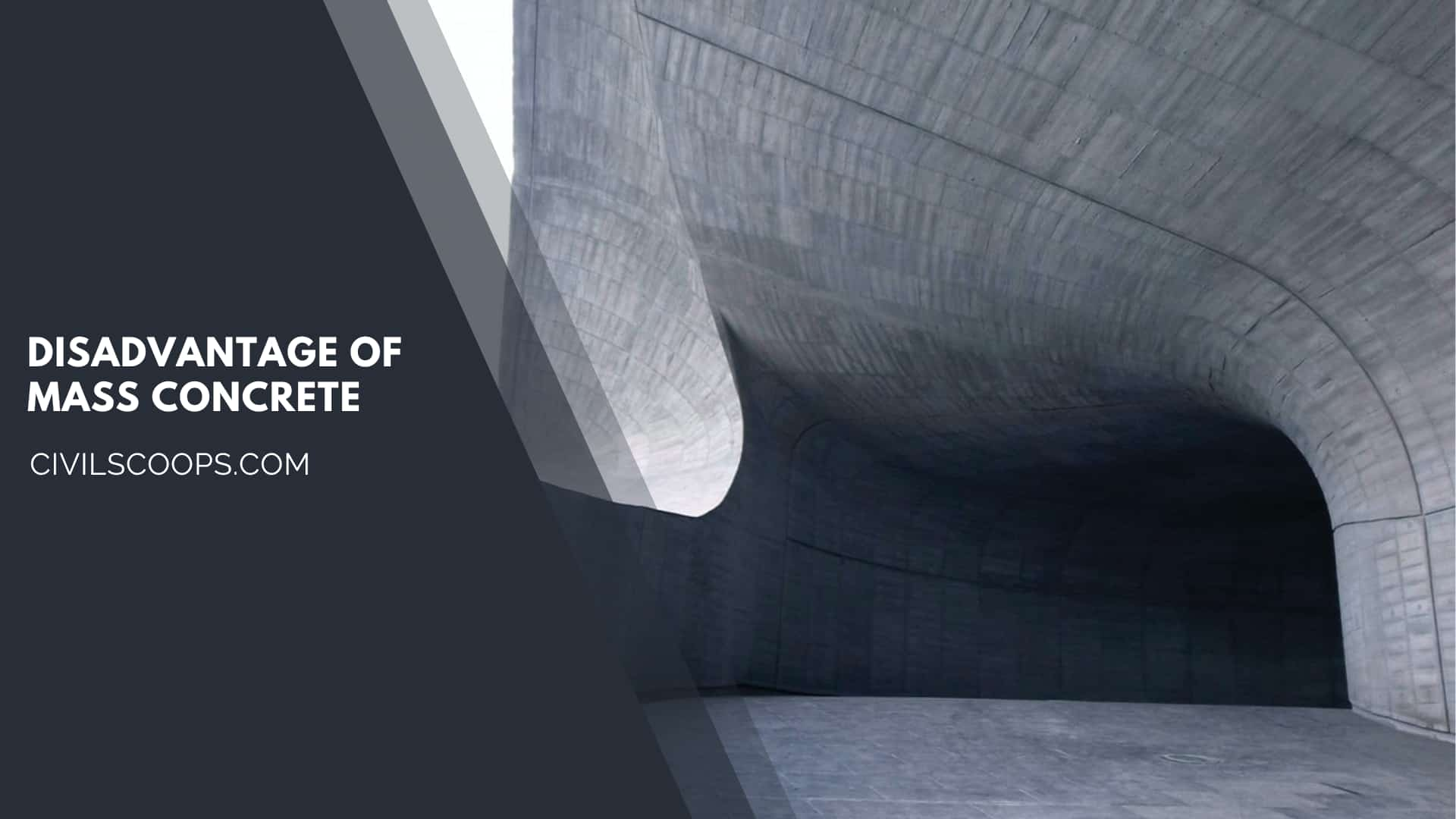Table of Contents
Mass Concrete:
Large bridge piers, foundation, and such as dams like the massive structure, the mass concreting technique is used. For also, mass concrete strength, economy, uniformity, and other factors considered should take into account.
The temperature shrinkage is the major problem in mass concrete work. To prevent shrinkage, one must have excellent control of early setting the mass concrete intended for a large structure.
In mass concrete, the water-cement ratio reaction the temperature rise within a large concrete mass. And in mass concrete, if the heat is not quickly dissipated, it can be quite high.
To restrained volume change associated with a decline in temperature as the heat of hydration is dissipated, significant tensile stress and strain may result.
What Is Mass Concrete?
In mass concrete, the heat of hydration may increase the temperature considerably due to the greater mass of the concrete.
Large bridge piers, foundations, and such as dams like the massive structure the mass concreting technique used is known as mass concrete.
The low slump and large size of aggregate are used in mass concrete to reduce the amount of cement in the concrete.
In mass concrete, to obtain a durable structure with more economy, the mass concrete should be properly designed, placed, and cured.
In mass concrete to restrained volume change associated with a decline in temperature as the heat of hydration is dissipated, the significant tensile stress and strain may result.
To prevent shrinkage, one must have excellent control of early setting the mass concrete intended for a large structure.
Also Read: All About Grillage Foundation | Types of Grillage Foundation | Features of Grillage Foundation
Mass Concrete Underpinning:
In controlled stages, Mass concrete is the most common form of underpinning and involves excavating to a depth where suitable bearing strata exists.
In mass concrete, before the next ‘pin’ is excavated, The first excavation is filled with concrete and allowed to cure.
Between the new and old foundations, a dry sand cement packing mortar is rammed form transferring the building load to the new pin. For shallow depth underpinning, this method is suitable.
Some Techniques of Mass Concrete Underpinning:
- The underpinning technique of mass concrete involves existing footings down to a greater depth where stable soil of a suitable bearing capacity exists.
- A failing section of the building by extending the construction of a new foundation beneath.
In a pre-determined sequence, the mass concrete is achieved by excavating individual bases in short lengths. - After excavated to the appropriate depth, and before concreting, supervisory staff and building control, inspect the excavation that the ground is free from soft spots, tree roots, etc.
- The base is backfilled with concrete when the excavation has been approved; shutters are set in position.
Between the underside of the footing and the top of the base, the concrete is usually cast to leave a narrow gap. - When underpinning is constructed in shrinkable clay, low-density polystyrene is usually installed.
Properties of Mass Concrete:
The properties of mass concrete are below.
- Workability.
- Water Tightness.
- Durability.
- Strength.
1. Properties of Mass Concrete: Workability
An essential property of mass concrete is workability. To produce full compaction, the workability determines the amount of useful internal work necessary.
For mass concrete works, uniformity of workability is essential. And the economy of mass concrete generally requires low cement content. For mass concrete, workability should be optimum.
2. Properties of Mass Concrete: Water Tightness
For hydraulic structures such as dams, large bridge piers, and foundation, for the massive structure, Watertight ness is an important property of concrete.
To the concrete mix to improve water tightness, some pozzolana should be added. By using good quality aggregate, low water-cement ratio, good consolidation during placing, and proper curing, Lean mixes used in mass concrete. Concrete should be impermeable, and also this can achieve.
3. Properties of Mass Concrete: Durability
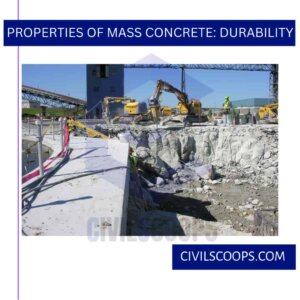
The prevention ability of concrete from chemical attack, weathering action, and abrasion is known as durability. The durability of concrete depends upon some factors like mix design, workmanship, placing, and curing.
A properly cured and concrete with a low water-cement ratio correctly consolidated provides durable concrete. By careful selection of materials, we can improve the chemical resistance of concrete. And by entrainment of a minute are bubbled into the concrete weathering durability can be improved.
4. Properties of Mass Concrete: Strength
To avoid failure, the strength of concrete defines as the resistance that concrete provides against a load. Instead of ordinary cement concrete, Sometimes it is economical to add pozzolana or use portland pozzolana cement.
The strength of mass concrete depends on the water-cement ratio, quality of aggregates, compaction, curing, etc. The plasticity and workability of concrete also increase by pozzolana.
Also Read: What Is Plaster | Methods of Plastering
Mass Concrete Specification:
The concrete specification is that It is defining as a with dimensions large enough to require measures to be taken. Large size aggregates are preferred for mass concrete; it is concrete with a higher proportion of cement with a lesser proportion of cement.
Large bridge piers, foundations, and such as dams like the massive structure, the mass concreting technique is used. The temperature shrinkage is the major problem in mass concrete work.
To prevent shrinkage, one must have excellent control of early setting the mass concrete intended for a large structure.
Materials Used for Mass Concrete
- Portland Cement with Low Heat of Hydration.
- Pozzolanas.
- Aggregate.
- Admixture.
- Mixing Water.
- Coolants.
1. Portland Cement with Low Heat of Hydration:
To achieve the desired strength for both heat of hydration and the minimum economy amount of portland cement should be used.
2. Pozzolanas Used for Mass Concrete:
To reduce the heat of hydration, workability, and delayed strength gain, some pozzolanas should be added.
3. Aggregate Use for Mass Concrete:
The size of 20-30 mm aggregate is suitable for large beams and columns in the case of structural concrete. A 40 mm aggregate can use for dams. If the fine aggregate to the total aggregate ratio should below.
4. Admixture Use for Mass Concrete:
For the mass concrete retarding and the water-reducing admixture is very useful. After the addition of superplasticizers, Mass concrete to the pump should provide with high range water reducing and retarding admixture to provide 12-18 mm.
5. Mixing Water for Mass Concrete:
To provide a low slump, a low quantity of water should be added to mass concrete.
6. Coolants for Mass Concrete:
In hot weather conditions, coolant for the Temperature of the mass concrete dam should be controlled between 5C and 20C. The water will help when the addition of finely chopped ice instead.
Mass Concrete Foundation:
A mass concrete foundation is defining as a dimension large enough to require measures to be taken. Large bridge piers foundation, and such as dams like the massive structure the mass concrete is used.
The heat of hydration of mass concrete is more than of other concrete because of the large amount of concrete. To cope with the generation of heat from the hydration of the cement and attendant volume change to minimize cracking.
The temperature shrinkage is the major problem in mass concrete foundation work.
How Much Mass Density of Concrete?
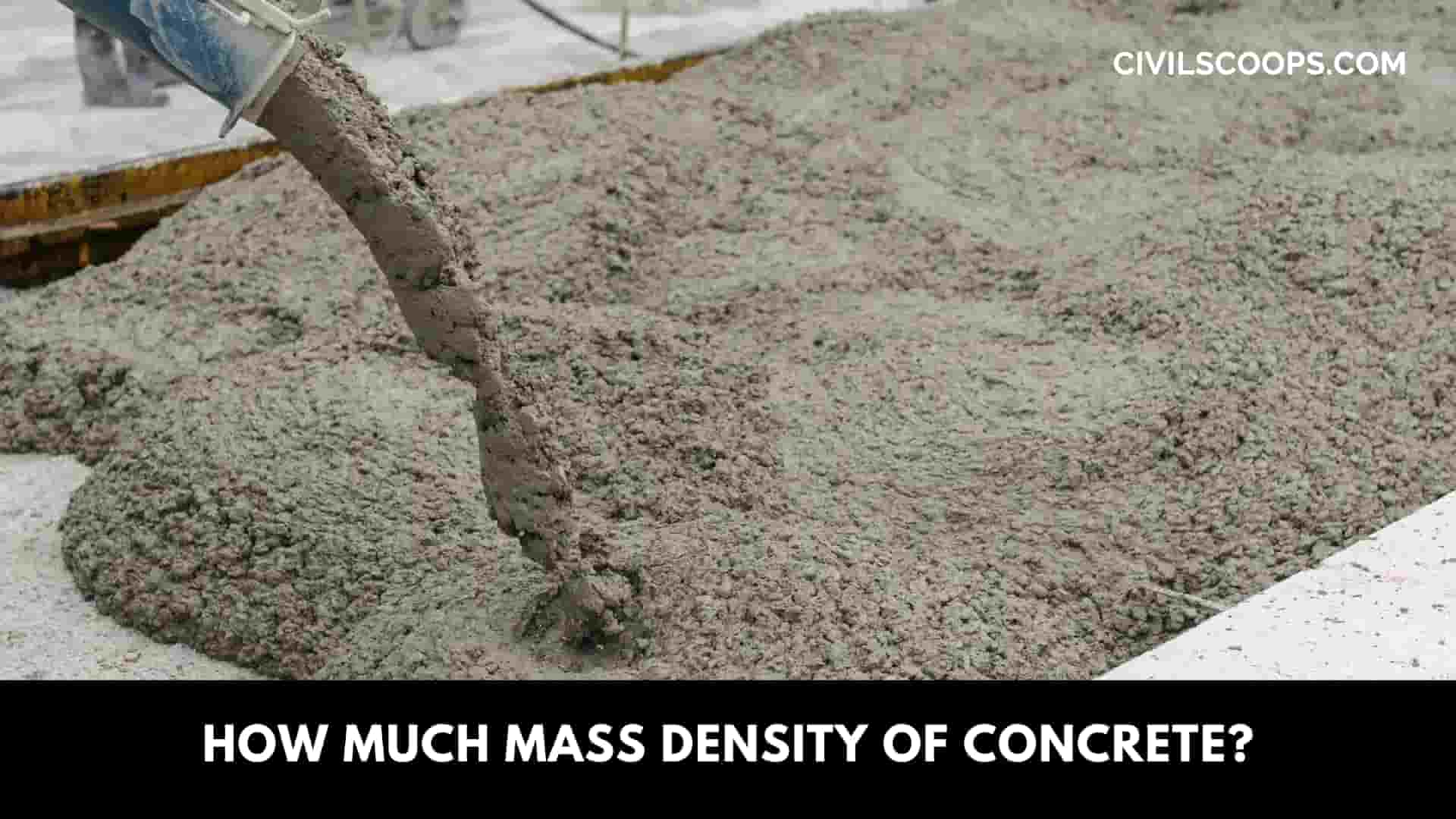
A mass density of concrete is a normal concrete weight is 2400 kg per cubic meter. The water and cement content, amount of entrained air, and the density of aggregate upon these factors, the density of mass concrete is depending.
For the lightweight concrete, the density is 1920 kg per cubic meter and cubic foot 116 lbs. It contains the concrete weight can vary depending on the air and moisture content.
How to Mass Concrete Temperature Monitoring?
The mass concrete temperature we can monitor in two ways that’s are below.
To monitor the temperature of mass concrete, low heat of hydration cement or blended such as PCC or is are being.
To monitoring temperature of mass concrete large size aggregate 75 to 150 mm and high aggregate content up to 80% of total aggregate.
Use of ice flakes up to about 70% of mixed water, pre-cooling of mixed water.
By circulating very cold water through an embedded thin steel pipe.
Leading to heat loss use aggregate having higher thermal diffusivity, which results in a lower maximum temperature.
Advantage of Mass Concrete:
There have been many advantages of mass concrete that are below.
- The solid structures above 80cm are made of mass concrete.
- The mass concrete frequently contains a large volume of concrete.
- It’s an advantage that the large volume can set in a short time.
- Another advantage of mass concrete is where large bridge piers, foundation, and such as dams like the massive structure the mass concreting technique is used.
- In mass concrete, to obtain a durable structure with more economy, mass concrete is used.
- Another advantage of mass concrete is to restrained volume change associated with a decline in temperature as the heat of hydration is dissipated.
- To prevent shrinkage, one must have excellent control of early setting the mass concrete intended for a large structure. This is an important advantage of mass concrete.
Disadvantage of Mass Concrete:
There are have many disadvantages of mass concrete as like advantages. That’s below-
- The disadvantage of mass concrete is the water-cement ratio reaction; the temperature rises within a large concrete mass.
- The second disadvantage of mass concrete is the temperature shrinkage is the major problem in mass concrete work.
- With the use of a large quantity of concrete, the structure construction cost will be increased. This is a common disadvantage of mass concrete.
Mass Concrete
Mass concrete is any volume of concrete with dimensions large enough to require that measures be taken to cope with the generation of heat from hydration of the cement and attendant volume change to minimize cracking. The one characteristic that distinguishes mass concrete from other concrete work is thermal behavior.
Mass Concrete Specification
Concrete placement for a pour that has dimensions of 5 feet or greater in 3 different directions. In the case of a circular cross-section, a mass concrete placement is defined as a pour that has a diameter of 6 feet or greater and a length of 5 feet or greater.
Mass Concrete Temperature Monitoring
Mass concrete temperature monitoring is the action of recording and reading the temperature of freshly poured mass concrete elements. This requires a temperature recording sensor (also known as a thermocouple for mass concrete) to be placed near the center of the element.
Temperature Reinforcement in Mass Concrete
Temperatures. b) The maximum temperature differential between the center and surface of placement shall not exceed 35 degrees Fahrenheit. These limits are in place to avoid delayed ettringite formation (DEF) which can cause cracking and reduce concrete strength.
Mass Concrete Temperature
According to ACI SPEC-301-20, the maximum temperature in mass concrete after placement shall not exceed 160 °F (70 °C); and the maximum temperature difference between center and surface of placement shall not exceed 35 °F (19 °C).
Mass Concrete Placement
Mass placements are defined as placements with a least dimension greater than or equal to 5 ft., or designated on the plans.
Mass Concrete Underpinning
Mass concrete underpinning method is the traditional method of underpinning, as it has been followed by centuries. The method involves extending the old foundation till it reaches a stable stratum. The soil below the existing foundation is excavated in a controlled manner through stages or pins.
Pozzolana Meaning
A type of volcanic ash used for mortar or for cement that sets under water.
Mass Density of Concrete
The density of concrete varies, but is around 2,400 kilograms per cubic metre (150 lb/cu ft).
Like this post? Share it with your friends!
Suggested Read –
- 23 Different Types of Doors
- How to Get Rid of Paint Smell
- Best Concrete Mix for Driveway Repair
- What Is an Arch | 21 Different Parts of an Arch
- What Is Building Construction | Steps & Processes of Building Construction | Application of Building Construction | How to Do Planning of Building Construction
